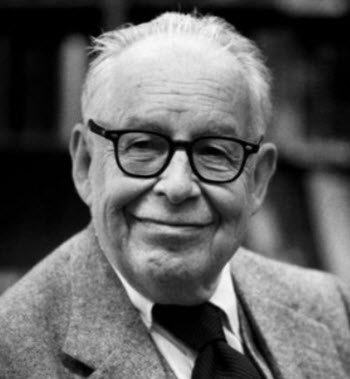Contents
 Richter’s magnitude scale was developed by the physicist Charles F. Richter to measure the strength of earthquakes. Originally presented in 1935, it was later revised and renamed the Local magnitude scale (ML).
Richter’s magnitude scale was developed by the physicist Charles F. Richter to measure the strength of earthquakes. Originally presented in 1935, it was later revised and renamed the Local magnitude scale (ML).
Today, most seismological authorities use other scales, such as the moment magnitude scale (MW) to report earthquake magnitudes. Yet, it is still common for journalists to use the term “Richter scale” when reporting about earthquakes.
Richter’s magnitude scale is a logarithmic scale, and all the widely accepted new earthquake scales – including the moment magnitude scale – retain this feature and are scaled to have roughly comparable numeric values.
Richter magnitudes
How is the Richter magnitude of an earthquake determined?
It is determined from the logarithm of the amplitude of waves recorded by seismographs. Adjustment are made to compensate fort the fact that different seismographs are situated in different locations.
It’s a logarithmic scale
Each whole number increase on this scale represents a tenfold increase in measured amplitude.
If we look at the amount of energy released, each whole number increase on the scale represents an increase of about 31.6 times. Each increase of 0.2 represents an approximate doubling of the energy released.
Average earthquake effects
Below, you will find a table describing typical effects in areas near the epicenter for earthquakes of magnitudes from 1 to 9 on Richter’s magnitude scale. The table is only to be used as a rule-of-thumb reference and there are many examples of earthquakes where the damage near the epicenter was lower or greater than what this table suggests. Many factors impact the consequences of an earthquake of a certain magnitude, such as geological conditions and the depth of the earthquake’s focus (a point located beneath the epicenter). Also, areas with a lot of poorly constructed buildings and constructions sensitive to shakings will sustain more damage.
| Magnitude | Average earthquake effects |
| 1.0-1.9 | This type of earthquake is usually only noticed by seismographs. |
| 2.0-2.9 | Difficult to feel, but sensitive people might notice if conditions are right.
No damage to buildings. |
| 3.0-3.9 | Typically felt by people at and near the epicenter.
Indoor objects can shake in a noticeable manner. Usually no damage to buildings. |
| 4.0-4.9 | Felt by most people in the affected area.
Noticeable shaking of indoor objects, some may fall over. Usually no to minimal damage to buildings. |
| 5.0-5.9 | Felt by pretty much everyone in the affected area.
Can cause damage to poorly constructed buildings. No to minimal damage to other buildings. |
| 6.0-6.9 | Felt by people located up to hundreds of kilometers from the epicenter.
At the epicentral area, there will be strong violent shaking. Moderate to severe damage to poorly constructed buildings. Slight to moderate damage to other buildings. |
| 7.0-7.9 | Felt far away from the epicenter.
Likely to cause major damage within 250 km from epicenter. Can make buildings collapse partially or completely. Damage not limited to poorly constructed buildings. |
| 8.0-8.9 | Felt in an extremely large region.
Causes damage in a large area. Can make buildings collapse partially or completely. Damage not limited to poorly constructed buildings. Even well-constructed and earthquake resilient buildings can suffer from moderate to heavy damage.
|
| 9.0 and up | Shaking extend to far away locations and causes building damage far away from the epicenter.
Near the epicenter, there will be immense destruction with collapsed and severely damaged buildings, even well-built and earthquake resilient ones. An earthquake of this magnitude is likely to cause permanent changes in ground topography. |
The largest recorded earthquake so far was the Great Chilean Earthquake that occurred on 22 May, 1960. This earthquake is also known as the 1960 Valdivia Earthquake since Valdivia was the most affected city. Various studies have placed this megathrust earthquake at 9.4-9.6 on the moment magnitude scale (which is similar, but not identical, to the Richter magnitude scale). The earthquake occurred in the afternoon and lasted for approximately 10 minutes. It’s epicenter was near Lumaco in the Araucanía Region of Chile.
While earthquakes stronger than 9.5 on the moment magnitude scale are theoretically possible, they are unlikely to occur unless our planet is impacted by an enormous amount of external energy. The devastating asteroid that created the Chicxulub crater and brought on the mass extinction of non-avian dinosaurs is believed to have caused an earthquake with a magnitude around 13 on the moment magnitude scale. This asteroid was 10-15 km in diameter.